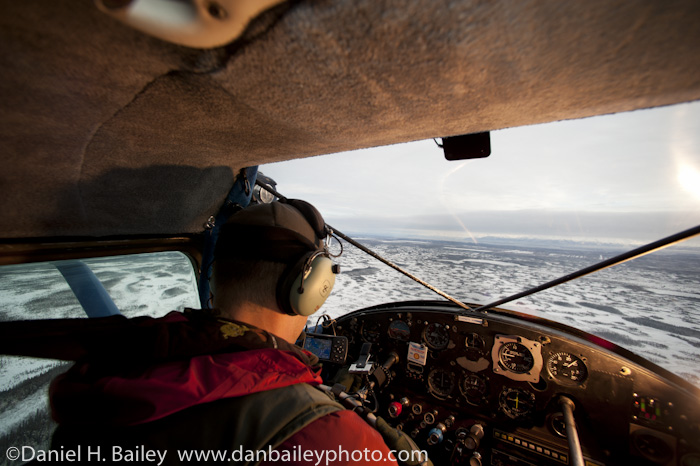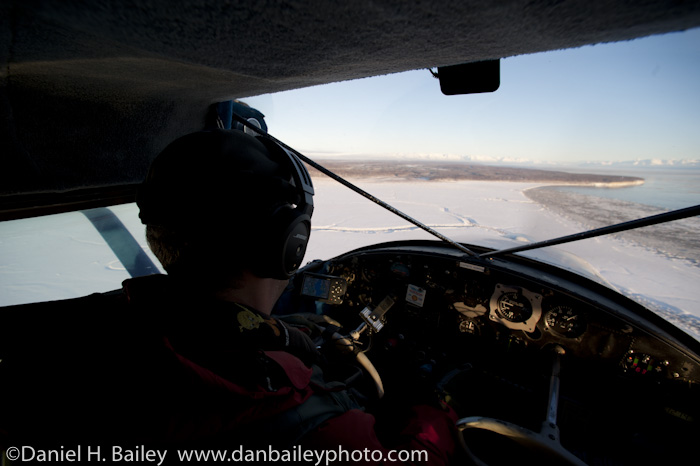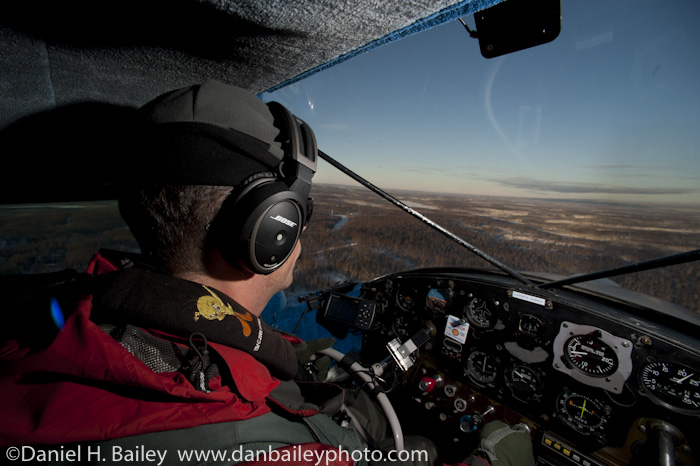
A couple of weeks ago, I posted this aviation shot of my friend Udo flying his Cessna 170 over the snow covered Alaska landscape. It was shot with my Nikon D700 and Nikon 14mm f2.8D ED AF lens. I also used a Nikon SB-800 Speedlight to add some dynamic light to the scene and warm up the scene, which I thought worked really well to help bring the image to life.
Today I’m going to show you the before and after and compare it with a couple of shots I made the other day so that you can see how to achieve this type of effect.
As you probably know already, especially if you’ve ever visited the Strobist website, or read anything by Joe McNally, the number one way to improve flash photography is to get the thing off camera. Moving the flash to any other location than straight up front and center gives your light depth and interest.
Over the years, the brilliant photon engineers at Nikon have developed the CLS (Creative Lighting System) to near perfection. I’ll stop saying “near” when they have full CLS radio capabilities built right in that work at any distance and behind any physical barriers without having to buy any extra and expensive non-Nikon accessories like the new Pocket Wizard system that’s about to be released.
At this point, though, the CLS system works way better than it ever did with the SB-26, which was their first Speedlight with wireless off camera slave abilities. In fact, it works so well that there’s almost no reason that you shouldn’t run out and buy a handful of Nikon Speedlights and start experimenting with those puppies.
With the above shot, I held the camera over my left shoulder, and I held the SB-800 in my right hand and triggered the flash with D700’s pop up flash in Commander mode. I wasn’t actually looking through the viewfinder, since that 14mm lens is so wide, you can just point it in the general direction and know that you’re pretty much going to get the subject in the frame. That doesn’t mean it doesn’t take firing a whole bunch of shots to make sure you’ve got the framing just right, but hey, that’s ok now that we don’t burn film anymore.
I also used the included CTO orange gel on the SB-800 to add some warmth to the scene. You have to be careful when doing this type of thing because it can end up looking very unnatural, which is exactly what you don’t want to go for when using flash. The idea is that you want to make it look like you’re NOT using the flash, or at least pull it off so that the light from the flash accentuates instead of drawing too much attention to itself.
With that first shot, I was able to make it look like low, end of the day sun was streaming in from the right side. It’s convincing because that’s actually how winter really looks up here in Alaska. The sun is low all day long and so it casts a warm, orange light, and even though most of the sky is overcast, we’ve all seen those days where the sun shines in under the clouds.

Above is a similar scene (different day) with no flash. The pilot is pretty much lost in shadow. Silhouettes are cool and I’ve sold quite a few of them over the years, but with some subjects, you actually want to see the details. Below that is the scene shot with flash and NO warming gel. It works; the exposure is right on and the side lighting from the flash gives it some good depth, it’s just not nearly as visually appealing as the first shot above.

There’s a lot you can do with off-camera flashes in outdoor photography. Check out this awesome video of Dave Black shooting surfing with 8 SB-900’s all mounted together. That’s right, an Octo-rig of flashes. You don’t need to go that far, but with the new Nikon SB-700 Speedlight, you can get yourself a wireless remote flash setup for just over $300, which is quite a bit less than the SB-900 costs these days. I’ll do more posts like this in the future.
Although most of my work in the past has been based around natural light, I’ve found real excitement with the creative and technical opportunities that flash allows. Plus, it makes me that much more marketable, because I can take on a much wider range of jobs. It means that I spend my non-adventure days shooting things like dentist office portraits, which actually pay the bills as opposed to sitting here pounding away on the keyboard writing blog posts.
So get a flash and start tinkering; it will open up a world of new possibilities. You’ll learn alot and once you start to figure that stuff out, you’ll end up becoming a much better photographer.
